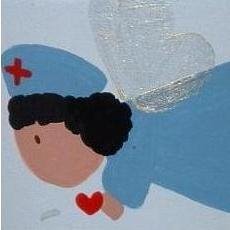1. A nurse is reviewing a patient’s medication during shift change. Which of the following medication would be contraindicated if the patient were pregnant? Note: More than one answer may be correct.
A: Coumadin
B: Finasteride
C: Celebrex
D: Catapress
E: Habitrol
F: Clofazimine
2. A nurse is reviewing a patient’s PMH. The history indicates photosensitive reactions to medications. Which of the following drugs has not been associated with photosensitive reactions? Note: More than one answer may be correct.
A: Cipro
B: Sulfonamide
C: Noroxin
D: Bactrim
E: Accutane
F: Nitrodur
3. A patient tells you that her urine is starting to look discolored. If you believe this change is due to medication, which of the following patient’s medication does not cause urine discoloration?
A: Sulfasalazine
B: Levodopa
C: Phenolphthalein
D: Aspirin
4. You are responsible for reviewing the nursing unit’s refrigerator. If you found the following drug in the refrigerator it should be removed from the refrigerator’s contents?
A: Corgard
B: Humulin (injection)
C: Urokinase
D: Epogen (injection)
5. A 34 year old female has recently been diagnosed with an autoimmune disease. She has also recently discovered that she is pregnant. Which of the following is the only immunoglobulin that will provide protection to the fetus in the womb?
A: IgA
B: IgD
C: IgE
D: IgG
6. A second year nursing student has just suffered a needlestick while working with a patient that is positive for AIDS. Which of the following is the most important action that nursing student should take?
A: Immediately see a social worker
B: Start prophylactic AZT treatment
C: Start prophylactic Pentamide treatment
D: Seek counseling
7. A thirty five year old male has been an insulin-dependent diabetic for five years and now is unable to urinate. Which of the following would you most likely suspect?
A: Atherosclerosis
B: Diabetic nephropathy
C: Autonomic neuropathy
D: Somatic neuropathy
8. You are taking the history of a 14 year old girl who has a (BMI) of 18. The girl reports inability to eat, induced vomiting and severe constipation. Which of the following would you most likely suspect?
A: Multiple sclerosis
B: Anorexia nervosa
C: Bulimia
D: Systemic sclerosis
9. A 24 year old female is admitted to the ER for confusion. This patient has a history of a myeloma diagnosis, constipation, intense abdominal pain, and polyuria. Which of the following would you most likely suspect?
A: Diverticulosis
B: Hypercalcaemia
C: Hypocalcaemia
D: Irritable bowel syndrome
10.
A: RH positive, RH positive
B: RH positive, RH negative
C: RH negative, RH positive
D: RH negative, RH negative
11. A new mother has some questions about (PKU). Which of the following statements made by a nurse is not correct regarding PKU?
A: A Guthrie test can check the necessary lab values.
B: The urine has a high concentration of phenylpyruvic acid
C: Mental deficits are often present with PKU.
D: The effects of PKU are reversible.
12. A patient has taken an overdose of aspirin. Which of the following should a nurse most closely monitor for during acute management of this patient?
A: Onset of pulmonary edema
B: Metabolic alkalosis
C: Respiratory alkalosis
D: Parkinson’s disease type symptoms
13. A fifty-year-old blind and deaf patient has been admitted to your floor. As the charge nurse your primary responsibility for this patient is?
A: Let others know about the patient’s deficits
B: Communicate with your supervisor your concerns about the patient’s deficits.
C: Continuously update the patient on the social environment.
D: Provide a secure environment for the patient.
14. A patient is getting discharged from a SNF facility. The patient has a history of severe COPD and PVD. The patient is primarily concerned about their ability to breath easily. Which of the following would be the best instruction for this patient?
A: Deep breathing techniques to increase O2 levels.
B: Cough regularly and deeply to clear airway passages.
C: Cough following bronchodilator utilization
D: Decrease CO2 levels by increase oxygen take output during meals.
15. A nurse is caring for an infant that has recently been diagnosed with a congenital heart defect. Which of the following clinical signs would most likely be present?
A: Slow pulse rate
B: Weight gain
C: Decreased systolic pressure
D: Irregular WBC lab values
16. A mother has recently been informed that her child has Down’s syndrome. You will be assigned to care for the child at shift change. Which of the following characteristics is not associated with Down’s syndrome?
A: Simian crease
B: Brachycephaly
C: Oily skin
D: Hypotonicity
17. A patient has recently experienced a (MI) within the last 4 hours. Which of the following medications would most like be administered?
A: Streptokinase
B: Atropine
C: Acetaminophen
D: Coumadin
18. A patient asks a nurse, “My doctor recommended I increase my intake of folic acid. What type of foods contain folic acids?”
A: Green vegetables and liver
B: Yellow vegetables and red meat
C: Carrots
D: Milk
19. A nurse is putting together a presentation on meningitis. Which of the following microorganisms has noted been linked to meningitis in humans?
A: S. pneumonia
B: H. influenza
C: N. meningitis
D: Cl. difficile
20. A nurse is administering blood to a patient who has a low hemoglobin count. The patient asks how long to RBC’s last in my body? The correct response is.
A: The life span of RBC is 45 days.
B: The life span of RBC is 60 days.
C: The life span of RBC is 90 days.
D: The life span of RBC is 120 days.










0 comments:
Post a Comment